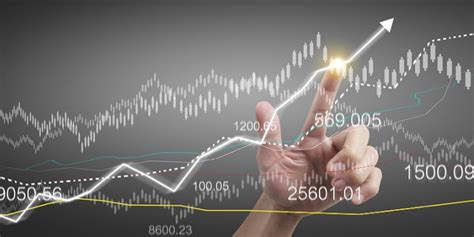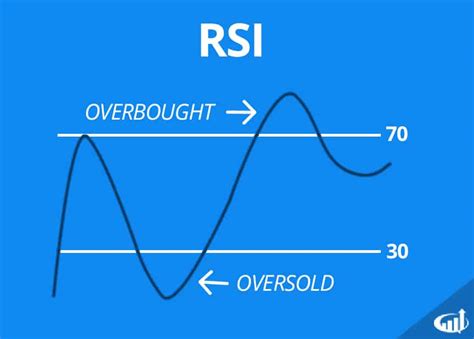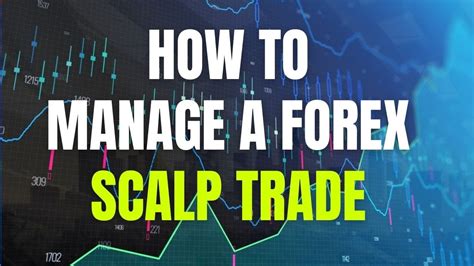Forex scalping on daily charts is a dynamic and fast-paced strategy, favored by traders who thrive on quick decision-making and small, consistent profits. To successfully play forex scalp, you need a solid grasp of the market's technical indicators, a clear understanding of time frames, and the ability to manage risk effectively. Unlike other trading methods, forex scalping focuses on taking advantage of tiny price fluctuations, often in just a few minutes. This approach can be especially profitable when applied to the right currency pairs, such as EUR/USD or GBP/USD, but it requires precision and skill to execute well. Whether you're just starting or looking to refine your strategy, mastering the key elements of scalping is essential for sustained success.

The Fundamentals of Forex Scalping
To play forex scalp effectively, a solid understanding of the foundational elements is essential. Grasping the basics, such as currency pairs, technical indicators, and market analysis, will lay the groundwork for your success.
1. What is Forex Scalping?
Forex scalping is a short-term trading strategy aimed at capitalizing on small price movements. Traders typically execute multiple trades throughout the day, with each trade targeting minimal profit margins. Unlike swing trading, which looks for bigger price swings, scalping requires precision and quick decision-making.
Key Features of Forex Scalping
Focus on small price movements.
Quick entry and exit from the market.
High-frequency trading.
Minimal holding period (from seconds to minutes).
Requires quick access to data and advanced technical analysis tools.
Scalping vs Other Trading Strategies
Scalping vs Day Trading: Scalpers make many trades in a day, while day traders focus on a single or few trades lasting several hours.
Scalping vs Swing Trading: Swing traders hold positions for days or weeks, while scalpers make fast trades with shorter timeframes.
Who Should Consider Scalping?
Active traders who can dedicate time to monitoring the market.
Traders comfortable with quick decision-making.
Those seeking frequent, smaller profits rather than larger, occasional gains.
Best Currency Pairs for Scalping
Major pairs like EUR/USD and GBP/USD are often preferred for their high liquidity.
These pairs generally experience faster price movements, making them ideal for scalping strategies.
2. Key Technical Indicators for Scalping
Scalping relies heavily on technical analysis to identify opportunities. Here are the indicators that will aid you in making swift decisions:
<1> Moving Averages (MA)
A simple yet powerful tool for trend-following.
Used to smooth out price data to identify direction.
Short-term moving averages (e.g., 5-period MA) are crucial for scalping.
<2> Relative Strength Index (RSI)
A momentum oscillator that measures the speed and change of price movements.
It helps identify overbought or oversold conditions.
A quick drop below 30 may indicate an oversold condition.
<3> Bollinger Bands
A volatility indicator that helps detect potential overbought or oversold levels.
Scalpers use the contraction and expansion of the bands as signals for price action.
Key Indicators for Scalping
| Indicator | Purpose | Best Timeframe | Ideal Use Case |
|---|---|---|---|
| Moving Average (MA) | Identifies trend direction | 1-minute, 5-minute | Spotting short-term trends |
| RSI | Measures market momentum | 5-minute, 15-minute | Finding overbought/oversold conditions |
| Bollinger Bands | Detects volatility and extremes | 5-minute, 15-minute | Identifying price breakouts |
| Stochastic Oscillator | Measures momentum and overbought/oversold | 5-minute, 15-minute | Confirming entry/exit points |
3. Choosing the Right Time Frame for Scalping
Scalpers need to select the appropriate time frame to maximize profits and minimize risk. The right choice of time frame determines the accuracy of entry and exit points.
Common Time Frames for Scalping
1-minute charts: Provide the most granular details for traders focused on immediate price movements.
5-minute charts: Offer a balance between quick moves and broader market trends.
15-minute charts: Useful for slightly longer positions, capturing minor but more reliable movements.
Time Frame Selection Based on Strategy
If you’re focusing on extremely short-term moves, 1-minute and 5-minute charts are your go-to.
For those combining scalping with broader trend analysis, consider 15-minute charts.
Impact of Time Frames on Scalping
The shorter the time frame, the more frequent the trades. However, this can lead to higher transaction costs, so it’s important to balance speed with cost efficiency.
4. Managing Risk in Forex Scalping
Risk management is crucial to a successful scalping strategy. Given the high frequency of trades, even small risks can compound quickly.
Stop-Loss and Take-Profit Orders
Stop-loss: Helps limit potential losses by automatically exiting a trade at a predefined price.
Take-profit: Automatically locks in profits once a predetermined price is reached.
Position Sizing and Risk-Reward Ratio
Scalpers must calculate proper position sizes to prevent large losses from small moves.
A common risk-reward ratio in scalping is 1:2 or 1:3, meaning that for every $1 at risk, the potential reward should be at least $2 or $3.
Effective Use of Leverage
Leverage increases both potential profits and risks.
Scalpers should be cautious with leverage, ensuring they don’t overextend their risk exposure.
5. The Role of Market Sentiment in Scalping
Understanding market sentiment can give you an edge in forex scalping. By gauging overall market mood, you can anticipate price movements more accurately.
What is Market Sentiment?
Market sentiment refers to the overall attitude of traders towards a particular currency or asset.
It is typically influenced by news, economic reports, and geopolitical events.
How Sentiment Affects Forex Scalping
Positive Sentiment: When sentiment is bullish, traders tend to buy, causing upward pressure on prices.
Negative Sentiment: Conversely, negative sentiment leads to selling pressure, pushing prices down.
Tools to Gauge Market Sentiment
News Feeds: Stay updated on global events that could impact the forex market.
Sentiment Indicators: Tools like the Commitment of Traders (COT) report can offer insights into market positioning.
Technical Indicators for Forex Scalping
For successful forex scalping, technical indicators play a crucial role. These tools help identify trends, momentum, and entry/exit points for short-term trades.
1. Moving Averages for Scalping
Moving Averages (MAs) are one of the simplest yet most reliable indicators for scalping, helping you identify market trends and smoothing out short-term price fluctuations.
Simple Moving Average (SMA)
The SMA is a basic indicator that calculates the average of past price data over a specific time period.
It helps identify the overall direction of the market.
Exponential Moving Average (EMA)
The EMA gives more weight to recent prices, making it more responsive to price changes.
Scalpers prefer EMAs (e.g., 5-period or 9-period) for quick, precise entries and exits.
Best Time Frame for Moving Averages
1-minute and 5-minute charts are ideal for scalpers, as they allow faster responses to market movements.

2. RSI (Relative Strength Index) for Scalping
The Relative Strength Index (RSI) is a momentum oscillator that measures overbought and oversold conditions. It’s an essential tool for scalpers seeking to enter or exit trades based on market momentum.
<1> How RSI Works
RSI is measured on a scale of 0 to 100.
A reading above 70 indicates that a currency pair is overbought, while a reading below 30 signals it is oversold.
<2> Best RSI Settings for Scalping
Scalpers typically use shorter periods (e.g., 5-period RSI) to ensure quicker signals.
<3> Using RSI in Scalping
Overbought (>70): Consider selling the pair or taking profits.
Oversold (<30): Look for buy opportunities.
Limitations of RSI
False signals can occur during strong trends, so combining RSI with other indicators (like moving averages) is recommended.
3. Bollinger Bands in Forex Scalping
Bollinger Bands consist of a moving average (middle band) and two standard deviation bands that expand and contract based on market volatility. They help scalpers spot breakout opportunities and reversals.
Bollinger Bands Setup for Scalping
| Parameter | Setting | Purpose | Best Timeframe | Ideal Use |
|---|---|---|---|---|
| Middle Band | 20-period Simple MA | Determines the trend's direction | 1-minute, 5-minute | Identifying the trend direction |
| Upper Band | +2 Standard Deviations | Marks overbought conditions | 5-minute, 15-minute | Spotting potential sell signals |
| Lower Band | -2 Standard Deviations | Marks oversold conditions | 5-minute, 15-minute | Spotting potential buy signals |
| Band Squeeze | Narrow Bands | Volatility is low, anticipating breakout | 1-minute, 5-minute | Trading breakouts after narrow bands squeeze |
Bollinger Band Squeeze
When the bands contract, it indicates low volatility. Scalpers often prepare for a breakout, with price likely moving significantly when the bands expand again.
4. MACD (Moving Average Convergence Divergence) for Scalping
MACD is a trend-following momentum indicator that measures the difference between two moving averages. It’s ideal for scalping, particularly for detecting market momentum and potential reversals.
How MACD Works
The MACD line (difference between 12-day and 26-day EMAs) crosses above or below the signal line (9-day EMA) to indicate bullish or bearish trends.
Setting Up MACD for Scalping
Shorter periods (e.g., 5-minute or 15-minute charts) are preferred by scalpers for faster signals.
Using MACD in Scalping
MACD Crossovers: When the MACD crosses above the signal line, it’s a buy signal; when it crosses below, it’s a sell signal.
Divergence: A divergence between MACD and price can indicate weakening momentum and a possible reversal.
5. Stochastic Oscillator for Scalping
The Stochastic Oscillator is a momentum indicator that compares a currency pair’s closing price to its price range over a specific period. It’s a great tool for scalpers to identify overbought and oversold conditions.
How Stochastic Oscillator Works
The oscillator moves between 0 and 100. Values above 80 indicate an overbought market, while values below 20 indicate an oversold market.
Best Time Frame for Stochastic Oscillator
5-minute and 15-minute timeframes work best for identifying short-term opportunities.
<1> Trading with Stochastic Oscillator
- Overbought (>80): Sell the currency pair or consider taking profits.
- Oversold (<20): Look for buy opportunities when the market is poised to reverse.
<2> Combining Stochastic with Other Indicators
- It’s highly recommended to combine the Stochastic Oscillator with other trend indicators (like Moving Averages) for more reliable signals.

Risk Management for Forex Scalping
Effective risk management is essential for success in forex scalping, ensuring that you can protect your capital while making consistent profits.
1. Stop-Loss Orders in Scalping
A stop-loss order is a critical tool for minimizing potential losses in scalping. By setting a predefined exit point, you ensure that a losing trade doesn’t wipe out your profits.
<1> How Stop-Loss Orders Work
A stop-loss order automatically closes your trade when the price moves against you by a specified amount.
For scalpers, tight stop-loss orders (such as 5-10 pips) are often used to limit losses during quick price movements.
<2> Setting the Right Stop-Loss Level
Place the stop-loss just outside key technical levels, such as recent highs, lows, or Bollinger Bands.
Be cautious about setting stop-losses too tight, as this can result in being stopped out prematurely.
<3> Stop-Loss for Short-Term Scalping
For 1-minute and 5-minute charts, a stop-loss of around 3-5 pips is often recommended, depending on market volatility.
2. Take-Profit Orders for Scalping
A take-profit order locks in your profits once a trade reaches your target. It is equally important to scalping as stop-loss orders, ensuring that you exit a trade at the optimal moment.
How Take-Profit Orders Work
Take-profit orders are set at a specific price level, locking in profits when the price reaches your predetermined target.
The key is to set reasonable targets based on technical analysis and market conditions.
Setting Optimal Take-Profit Targets
For short-term scalping, targets are generally small (e.g., 5-10 pips). Use Moving Averages and RSI for pinpointing realistic price levels.
<1> Take-Profit with Scalping Strategies
Scalpers typically use the Risk-Reward Ratio (RRR) for take-profit targets, aiming for a 1:1 or 2:1 ratio to maintain profitability over the long term.
<2> Combining Stop-Loss and Take-Profit
To implement effective risk management, always use both stop-loss and take-profit orders. This allows for disciplined trading and removes emotional decisions during high-stress moments.
3. Position Sizing in Scalping
Position sizing is essential to determine how much capital to risk per trade. This directly impacts your overall risk exposure and profitability over time.
<1> Calculating Position Size
Position size determines how many lots to trade, factoring in your risk tolerance and the distance between your entry point and stop-loss.
Risk-Reward Ratio (RRR) and your capital size guide position sizing decisions.
<2> Adjusting Position Size Based on Account Size
For smaller accounts, it is crucial to trade smaller position sizes to avoid large drawdowns. Use low leverage with high-frequency trading strategies.
Position Sizing for Scalpers
| Account Size | Risk per Trade | Position Size for 5 Pips Stop-Loss | Recommended Lot Size |
|---|---|---|---|
| $1,000 | 1% ($10) | $10 risk / 5 pips = $2 per pip | 0.02 lots |
| $5,000 | 1% ($50) | $50 risk / 5 pips = $10 per pip | 0.10 lots |
| $10,000 | 1% ($100) | $100 risk / 5 pips = $20 per pip | 0.20 lots |
Scaling Your Position Size
As your account grows, gradually scale up your position size while ensuring that your risk management principles remain intact.
4. Risk-Reward Ratio in Scalping
The Risk-Reward Ratio (RRR) measures the potential reward versus the potential risk of each trade. Maintaining a favorable RRR is essential to ensure long-term profitability in scalping.
<1> Understanding the Risk-Reward Ratio
A 1:1 ratio means you risk $1 to make $1, while a 2:1 ratio means you risk $1 to make $2.
In scalping, a 2:1 ratio is considered optimal for consistent profits.
<2> How to Calculate Risk-Reward Ratio
Calculate the distance from your entry point to your stop-loss (risk) and the distance from entry to your take-profit (reward).
Example: If your stop-loss is 5 pips and your take-profit target is 10 pips, the RRR is 1:2.
<3> Using Risk-Reward in Scalping Strategy
Scalpers use RRR to ensure that each trade has a higher potential reward than the risk they are willing to take.
Focus on trades with a favorable RRR to build sustainable profits over time.
<4> Adjusting Risk-Reward Ratio for Volatile Markets
During periods of high volatility, such as after major news events, you may want to adjust your risk-reward ratio to account for larger price swings.
<5> Importance of Consistency in Risk-Reward Ratio
Scalping requires consistency. Sticking to a proven 2:1 RRR strategy allows traders to stay profitable despite short-term losses.
5. Diversifying Risk in Scalping
Diversification is not just for investment portfolios; it can also be used in forex scalping to spread risk across multiple currency pairs.
Why Diversification Matters
By trading multiple currency pairs like EUR/USD and USD/JPY, you reduce the impact of any single trade going wrong.
How to Diversify Your Scalping Portfolio
Use different time frames (e.g., 5 minutes and 1 hour) and technical indicators (e.g., RSI, MACD) to create a diversified strategy.
Limiting Exposure to One Currency Pair
Focus on no more than 2-3 currency pairs at a time to prevent overexposure and overtrading, which increases risk.
Advanced Strategies for Playing Forex Scalps
In the fast-paced world of forex scalping, advanced strategies can significantly improve your chances of success.
1. Using Fibonacci Retracement for Scalping
(Fibonacci retracement is one of the most popular tools in forex scalping strategies, helping traders identify potential reversal levels within price trends.)
<1> Understanding Fibonacci Levels
Key Retracement Levels: 23.6%, 38.2%, 50%, 61.8% are commonly used to identify price pullbacks in trending markets.
Traders often look for price reversals at these levels for entering or exiting trades.
<2> Scalping with Fibonacci in Trending Markets
In trending markets, use Fibonacci levels to enter at pullbacks when the price is in an uptrend (look for support at Fibonacci levels).
In a downtrend, seek resistance at these levels for entry points.
<3> Applying Fibonacci with Other Indicators
Combine Fibonacci retracement with other tools like Moving Averages or MACD for more robust signals. For example, if the price bounces off a 38.2% retracement level and aligns with an upward RSI divergence, it’s a strong buy signal.
2. Scalping with the Stochastic Oscillator
(The Stochastic Oscillator is an essential momentum indicator used in scalping to determine overbought or oversold conditions.)
Key Features of the Stochastic Oscillator
Ranges between 0 and 100, with readings above 80 indicating an overbought market, and below 20 indicating an oversold market.
The %K line and %D line crossovers provide entry signals.
<1> Identifying Trade Opportunities
A bullish crossover occurs when the %K line crosses above the %D line below the 20 level (oversold), signaling a potential buy.
A bearish crossover happens when the %K line crosses below the %D line above 80 (overbought), signaling a potential sell.
<2> Setting Stop-Loss and Take-Profit
Combine the Stochastic with Bollinger Bands to fine-tune exit points. If the price reaches the outer band while the Stochastic shows overbought conditions, this is a potential sell signal.
<3> Time Frame Consideration
On 5-minute or 15-minute charts, the Stochastic Oscillator is more effective for capturing short-term price movements, which is ideal for scalping.
3. Price Action Scalping Techniques
Price action scalping is a strategy that relies on reading raw price movements, without relying heavily on technical indicators. It’s a more intuitive and discretionary method.
Price action traders focus on patterns like:
Candlestick Patterns: Pin bars, engulfing patterns, and doji candlesticks are key indicators of potential price reversals.
Support and Resistance Levels: Identifying strong price levels where price tends to bounce.
In this strategy, the trader's focus shifts to market psychology and behavior rather than technical indicators.
4. Using ADX for Scalping Market Strength
(ADX is a valuable tool for determining the strength of a trend, which is crucial for effective scalping.)
What is the ADX?
The Average Directional Index (ADX) measures the strength of a trend but does not indicate direction.
ADX values above 25 suggest a strong trend, while values below 20 indicate a weak or sideways market.
<1> Trading with ADX in Scalping
In strong trends (ADX above 25), use a trend-following strategy, such as entering on Bollinger Band breaks or Moving Average crossovers.
In a weak market (ADX below 20), avoid scalping as the market lacks clear direction.
<2> Combining ADX with Other Indicators
Combine ADX with RSI for a more accurate understanding of price momentum. For example, a rising ADX and an oversold RSI could signal a strong buy opportunity.
ADX Values and Trend Strength
| ADX Value | Trend Strength | Action | Suitable Indicators |
|---|---|---|---|
| 0-20 | Weak Trend | Avoid scalping | Use RSI, Stochastic Oscillator |
| 21-25 | Weak to Moderate | Look for consolidation trades | Combine with Fibonacci or MA |
| 26-50 | Strong Trend | Follow the trend (buy in uptrend, sell in downtrend) | Combine with Moving Averages |
| 51-75 | Very Strong Trend | Aggressive trend-following scalps | Use ADX, Bollinger Bands |
5. Scalping with Moving Average Crossovers
(Moving averages are among the simplest yet most effective tools for scalpers looking to capture quick price moves.)
<1> Using Short-Term Moving Averages
5-period and 10-period simple moving averages (SMA) are often used for quick price moves.
A bullish crossover (when the short-term MA crosses above the long-term MA) signals a potential buy.
<2> Moving Average Strategy for Entry and Exit
Enter when a short-term SMA crosses above a long-term SMA (e.g., 5-period crossing above 20-period).
Exit when the price pulls back to the Moving Average or when the crossovers signal a trend reversal.
<3> Combining MAs with Bollinger Bands
To avoid false signals, use Bollinger Bands in conjunction with moving averages. If the price is at the lower Bollinger Band and a bullish crossover occurs, it’s a stronger signal for entering a buy trade.
In advanced scalping strategies, using tools like Fibonacci retracement, Stochastic Oscillator, and ADX can provide traders with clearer market insights. Scalpers should incorporate different indicators and time frames to create a balanced strategy that can adapt to both trending and sideways markets.

Optimizing Your Trading Setup for Forex Scalping
A well-optimized trading setup is essential for successful forex scalping. Scalping demands precision, speed, and an efficient workflow.
1. Choosing the Right Trading Platform for Scalping
A reliable trading platform is critical for executing quick trades and analyzing the market effectively. For forex scalpers, speed, ease of use, and advanced features are paramount.
MetaTrader 4 (MT4): Widely used due to its robust charting tools, automated trading capabilities, and fast order execution.
MetaTrader 5 (MT5): An upgrade to MT4, offering more timeframes, better charting tools, and additional order types.
cTrader: Known for its smooth interface, speed, and advanced charting capabilities.
TradingView: Great for real-time charting with a user-friendly interface and a wide range of technical indicators.
<1> Essential Features for Scalping
Fast order execution times.
Low latency to minimize delays in trade placement.
Advanced charting and technical analysis tools.
<2> Additional Considerations
Customizable layouts to monitor multiple pairs like EUR/USD or GBP/USD.
Trading strategies like Scalping are better executed on platforms that support automated trading, for example, using Expert Advisors (EAs).
2. Selecting the Best Time Frames for Scalping
Choosing the right time frame is crucial for effective scalping. Most scalpers focus on short time frames to capture rapid price movements.
<1> Most Common Time Frames
1-minute (M1): The shortest and most volatile, ideal for high-frequency scalping.
5-minute (M5): Suitable for traders who prefer a slightly slower pace with clearer trends.
15-minute (M15): Provides more reliable trends and is ideal for traders who can afford slightly longer trades.
<2> Considerations for Time Frame Selection
Scalping on 1-minute charts requires a high-speed internet connection and ultra-fast execution.
5-minute and 15-minute charts are often combined with technical indicators like the RSI or MACD for better decision-making.
3. Optimizing Hardware for Scalping
A high-performance hardware setup ensures that your trades are executed quickly and reliably.
For scalpers, having a fast and reliable computer and internet connection can make all the difference.
<1> Core Hardware Requirements
Processor: A multi-core processor (e.g., Intel i7 or higher) for faster processing of market data and charts.
RAM: At least 8GB of RAM for smoother multitasking when managing multiple charts and tools.
Internet: A stable, high-speed connection (preferably 50 Mbps or more) to minimize latency.
<2> Monitor Setup
Dual monitors are highly recommended to track multiple currency pairs and time frames simultaneously. A setup with a minimum of 1080p resolution ensures clearer chart analysis.
4. Risk Management Strategies for Scalping
Risk management is critical when scalping due to the high frequency of trades and fast market movements. Proper risk controls help protect your capital from significant drawdowns.

<1> Stop-Loss and Take-Profit Orders
Stop-Loss Order: Set to limit losses on each trade. A typical range for scalping is between 5-15 pips depending on the volatility of the currency pair.
Take-Profit Order: Set to lock in profits at predefined levels. For example, a 1:1 risk-reward ratio is commonly used in scalping.
<2> Position Sizing
Use a fixed percentage (e.g., 1% of total capital) for each trade to limit exposure.
Ensure that your position size aligns with your risk tolerance.
<3> Risk-Reward Ratio for Scalping
A 1:1 risk-reward ratio is often used, but some scalpers aim for 1.5:1 or 2:1 ratios for better profitability.
Risk Management Settings for Scalpers
| Risk Parameter | Description | Recommended Value |
|---|---|---|
| Stop-Loss Order | Protects against large losses | 5-15 pips |
| Take-Profit Order | Locks in profits after a certain gain | 5-15 pips or 1:1 risk-reward |
| Position Size | Trade size relative to account balance | 1-2% of capital per trade |
| Risk-Reward Ratio | Ensures profitable trades over time | 1:1 to 2:1 |
5. Setting Up Alerts for Scalping Opportunities
In fast-paced markets, scalpers rely on timely alerts to avoid missing trading opportunities. Setting up alerts based on specific price levels or technical indicators can improve your efficiency.
<1> Types of Alerts
Price Alerts: Set at specific levels, e.g., when the EUR/USD crosses a certain value.
Indicator Alerts: Triggered when an indicator like RSI or MACD reaches predefined levels.
News Alerts: Critical for reacting to economic events that might impact currency pairs.
<2> Using Trading Platforms for Alerts
MetaTrader 4 allows setting custom alerts for price levels or indicators.
TradingView has an advanced alert system that can notify you via desktop, mobile, or email.
Conclusion
Successfully playing forex scalp on daily charts demands a combination of technical expertise, sharp market analysis, and strong risk management. By mastering the key tools such as moving averages, RSI, and Bollinger Bands, along with understanding market psychology, traders can navigate even the most volatile forex markets with confidence. Whether you are targeting currency pairs like EUR/USD or GBP/USD, or using platforms like MetaTrader 4 or TradingView, the goal remains the same: to execute precise, high-frequency trades that capitalize on small price movements. Risk management strategies, such as setting appropriate stop-loss and take-profit orders, are crucial to ensure profitability while protecting your capital. With the right setup, strategies, and discipline, forex scalping can become a powerful tool in your trading arsenal.












